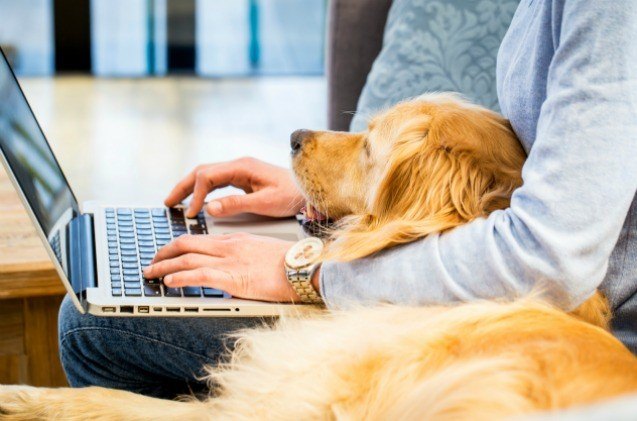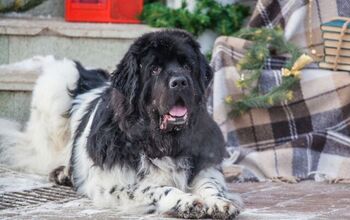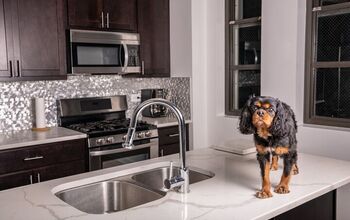Post Quarantine: How To Get Your Pet Into a Routine As You Head Back T

Think about it. Your entire world has been shifted (join the club) and it’s no different for your pet. Your routines and daily living changed and that is the same for your pets at home. Not that most of them cared; pet parents teleworking is like winning the jackpot if you’re the pet. Having their humans around 24/7 meant extra walks, pets, belly rubs and attention. Not to mention, just some extra company during the day.
Heck, for some of you, this time will forever fondly be known as the time you brought Buster home, or the time you adopted Fifi. Pet fostering and adoptions have been on the rise as more people were home and found the time to devote to their new family member. What a great way to make lemonade.
Now, though, as people plan their gradual returns to their offices and places of employment, they’re wondering how to prepare their pets.
Yes, preparing your pet to return back to work is a thing. Just like you’re going to have to adapt to wearing something other than pajama bottoms during Zoom meetings, your dog or cat will have to adjust too. They’ll lose out on those additional walks and rubs, and even face anxiety about you not being there.
And, now’s also a good time to think about how we can keep our dogs busy in our absence. Many love the Furbo Dog Camera and Treat Dispenser, as it works as both a monitor and a way to interact with your pet while you’re gone. Or consider DogTV to keep them entertained (way better for them than those Netflix Tiger King binges you’ve been on anyway).
If you’ve never tried any games or activities to keep them busy before, take the time you have before you return to work to do so. Outward Hound Nina Ottosson games are great ways to tire your dog out mentally, and that means they’ll miss you less when you’re gone. Snuffle Mats are another great way to leave your dog with some mental stimulation and activity too.
When it comes to training your pet on how to deal with the separation, remember that they’re good about picking up on your signals that you’re leaving. Believe it or not, saying, “Bye doggies!” every time you leave lets them know that you’re going somewhere, and if they’re anxious, it may be a cue to start worrying on their end. Instead, practice ‘pretending’ you’ll be leaving by walking around your house with your keys or things you might take to work but only go outside for a few minutes at a time to gradually help them learn that you leaving isn’t a terrible thing. Remember, they may have been fine with you going BEFORE the world broke and you started sheltering-in-home, but these last few months of 24/7 has been different for even the most independent of pets. It’s okay to help them learn to readjust gradually.
If you do return to work and find that your pet isn’t taking it as well, you’ll probably know pretty quickly. Dogs can chew and destroy things out of anxiety. They can have excessive salivation, pee in places they didn’t normally, and may even go on food or water strikes while you’re gone. Same goes for cats, and that’s obviously going to make you anxious–which then makes them more anxious too.
Remember, these aren’t bad behaviors; they’re dealing with this weird world we now live in as best as they can, and you can help make it a little easier. For now, start leaving and staying out longer and longer (even if you’re just at the end of your street) to get them adjusted. When you ‘get back’ and they’ve not destroyed anything and done well, praise, praise and praise them some more.
Consider crating your puppy some during the day even when you are home so he or she gets used to it and it won’t be such a problem when you’re gone. Make sure their crate/space is a place they want to be, and find a regular part of their routine. They’re less apt to destroy it when their anxiety takes over that way.
And, you can always consider doggy daycare, at least initially, to help them get into the groove of being separated from you. Talk with your local pet behaviorist to see if they have any other tips. Believe it or not, just like in their humans, this pandemic may have left your pet’s mind a little blown and they may need some medication to help them make it through. There’s no shame in that, and your veterinarian can help you decide how to help your best friend the best way.
At the end of the day, our pets want to be there for us because we’re always there for them…even when we aren’t. Helping them prepare for you going back to work will benefit you both because then neither of you will worry (too much) about the other as we all take steps toward the new normals we’ll be living.

More by Lori Ennis






















